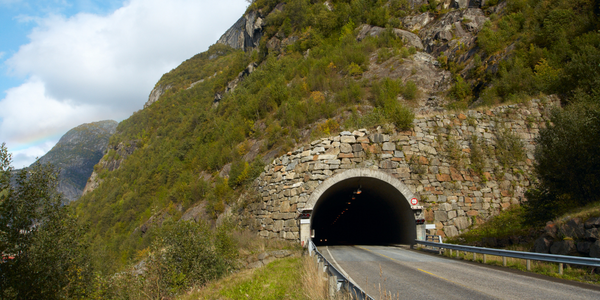Technology Category
- Infrastructure as a Service (IaaS) - Cloud Middleware & Microservices
- Platform as a Service (PaaS) - Application Development Platforms
Applicable Industries
- Cement
- Construction & Infrastructure
Applicable Functions
- Maintenance
- Product Research & Development
Use Cases
- Construction Management
- Infrastructure Inspection
Services
- System Integration
About The Customer
WCG Solutions is a defense contractor based in San Diego. The company provides a variety of services for government customers, including the Navy and the Department of Defense. The company is comprised of a diverse group of individuals, primarily engineering (civil, electrical, mechanical), environmental, and system lifecycle management personnel. They have worked on various maritime, communications, and general engineering projects spanning over 30 years. WCG provides a variety of engineering and systems management expertise and delivers practical engineering, which at its core brings concepts from the drawing board to reality. The current project they are working on for a major military branch involves building and maintaining a suite of web-based collaboration tools.
The Challenge
WCG Solutions, a defense contractor based in San Diego, was facing significant challenges with their infrastructure. The company provides services for government customers, including the Navy and the Department of Defense, and is involved in building and maintaining a suite of web-based collaboration tools. These tools are designed to facilitate communication across research and development organizations within the government. However, the company was struggling with the overwhelming technical debt of poor configuration management. This led to issues such as not knowing which deployments were configured in which way, making updates very difficult. Additionally, the company was dealing with the problem of having to rely on configuration management at the system level, which was not efficient or effective. The company was also facing challenges when it came to deploying stateful services in containers. Most of their services required persistence, and the push towards immutable infrastructure made it difficult to ensure that no one host was critical to their infrastructure.
The Solution
To address these challenges, WCG Solutions turned to containers and microservices. Containers provided an explicit documentation of every part of every service that the company was using. This allowed the company to take their old system with all its technical debt and put it into a concrete, defined, well-documented service that could be easily deployed and managed. The company used containers to achieve a much better situational awareness for everything from web apps to their databases. They also used a container scheduling system to gather metrics and perform load balancing across all of their systems. This meant that no one had to be aware of how a specific host was configured. The company also embarked on a year-long exploration to find a way of having an external data store for their container cluster that would meet the military-grade needs of the project. They eventually found a solution in Portworx, which provided replicated and highly available Docker volumes to their infrastructure.
Operational Impact

Case Study missing?
Start adding your own!
Register with your work email and create a new case study profile for your business.
Related Case Studies.

Case Study
System 800xA at Indian Cement Plants
Chettinad Cement recognized that further efficiencies could be achieved in its cement manufacturing process. It looked to investing in comprehensive operational and control technologies to manage and derive productivity and energy efficiency gains from the assets on Line 2, their second plant in India.

Case Study
IoT System for Tunnel Construction
The Zenitaka Corporation ('Zenitaka') has two major business areas: its architectural business focuses on structures such as government buildings, office buildings, and commercial facilities, while its civil engineering business is targeted at structures such as tunnels, bridges and dams. Within these areas, there presented two issues that have always persisted in regard to the construction of mountain tunnels. These issues are 'improving safety" and "reducing energy consumption". Mountain tunnels construction requires a massive amount of electricity. This is because there are many kinds of electrical equipment being used day and night, including construction machinery, construction lighting, and ventilating fan. Despite this, the amount of power consumption is generally not tightly managed. In many cases, the exact amount of power consumption is only ascertained when the bill from the power company becomes available. Sometimes, corporations install demand-monitoring equipment to help curb the maximum power demanded. However, even in these cases, the devices only allow the total volume of power consumption to be ascertained, or they may issue warnings to prevent the contracted volume of power from being exceeded. In order to tackle the issue of reducing power consumption, it was first necessary to obtain an accurate breakdown of how much power was being used in each particular area. In other words, we needed to be able to visualize the amount of power being consumed. Safety, was also not being managed very rigorously. Even now, tunnel construction sites often use a 'name label' system for managing entry into the work site. Specifically, red labels with white reverse sides that bear the workers' names on both sides are displayed at the tunnel work site entrance. The workers themselves then flip the name label to the appropriate side when entering or exiting from the work site to indicate whether or not they are working inside the tunnel at any given time. If a worker forgets to flip his or her name label when entering or exiting from the tunnel, management cannot be performed effectively. In order to tackle the challenges mentioned above, Zenitaka decided to build a system that could improve the safety of tunnel construction as well as reduce the amount of power consumed. In other words, this new system would facilitate a clear picture of which workers were working in each location at the mountain tunnel construction site, as well as which processes were being carried out at those respective locations at any given time. The system would maintain the safety of all workers while also carefully controlling the electrical equipment to reduce unnecessary power consumption. Having decided on the concept, our next concern was whether there existed any kind of robust hardware that would not break down at the construction work site, that could move freely in response to changes in the working environment, and that could accurately detect workers and vehicles using radio frequency identification (RFID). Given that this system would involve many components that were new to Zenitaka, we decided to enlist the cooperation of E.I.Sol Co., Ltd. ('E.I.Sol') as our joint development partner, as they had provided us with a highly practical proposal.

Case Study
Splunk Partnership Ties Together Big Data & IoT Services
Splunk was faced with the need to meet emerging customer demands for interfacing IoT projects to its suite of services. The company required an IoT partner that would be able to easily and quickly integrate with its Splunk Enterprise platform, rather than allocating development resources and time to building out an IoT interface and application platform.

Case Study
Bridge monitoring in Hamburg Port
Kattwyk Bridge is used for both rail and road transport, and it has played an important role in the Port of Hamburg since 1973. However, the increasing pressure from traffic requires a monitoring solution. The goal of the project is to assess in real-time the bridge's status and dynamic responses to traffic and lift processes.

Case Study
Bellas Landscaping
Leading landscaping firm serving central Illinois streamlines operations with Samsara’s real-time fleet tracking solution: • 30+ vehicle fleet includes International Terrastar dump trucks and flatbeds, medium- and light-duty pickups from Ford and Chevrolet. Winter fleet includes of snow plows and salters.








